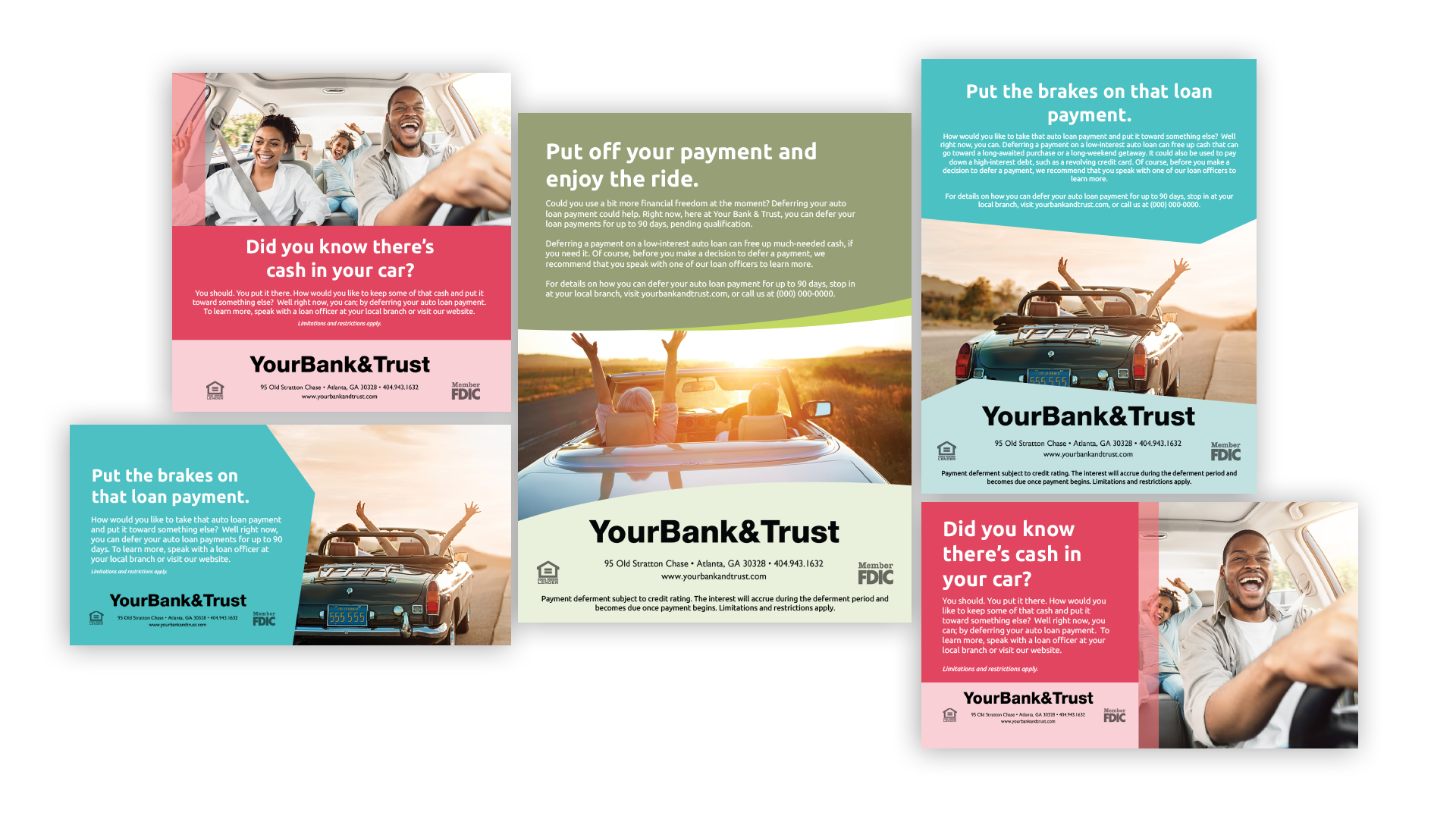
Marketers like to talk a lot about tactics, i.e., direct mail, social media, print advertising, broadcast, etc. And that’s because we marketing folks see the development of tactical assets, well, the fun part of marketing. I do. Don’t you? At least, that’s been my experience over decades spent in the creative departments of ad agencies. Creating the social media posts, videos, print ads, radio spots, etc. was the step in the process in which everyone wanted to participate.
Many, many times over the course of my career, I’d be presenting creative work in a client meeting when, at some point, everyone in the room would take on the role of either writer or art director. Headlines and visuals that had been sweated over, often for weeks, were now open for discussion with the goal of improving them significantly over the course of a one-hour meeting. At first, I was bothered by this. My writer partner and I had spent weeks developing this, say, campaign of print ads, and now this committee of individuals was going to make the work “better” by throwing out suggestions and “fixing” the campaign before lunch was brought in. As time went on, I grew a thicker skin, resigned myself to this being just another part of the process, and enjoyed lunch when it arrived.
While it’s all well and good that everyone wants to “contribute” to the creative because it’s fun, there’s a part of the process that’s not so fun, but even more important than creative development; the development of the strategy behind the creative, which takes the form of a creative brief.
Penning a creative brief is the first step in the development of any marketing messaging. The best metaphor for the creative brief is the roadmap, as it serves as a guide that will take a creative project from concept to completion. Take it from me, (after having to write many myself) writing a creative brief is hard work. While it’s tempting to simply wing it on strategy and go directly to creative development — because a brief is so challenging — the results can be disastrous. Without a roadmap, it’s very easy to take a creative project in the wrong direction. The brief serves to keep everyone on the same path, which is essential in getting to the desired destination, that being a marketing message that’s truly effective.
In brief, a creative brief is a relatively compact document that sums up the key points that must be considered in the creative development process and to ensure alignment across all of the project’s stakeholders from start to finish. Not only does that ensure the desired outcome in terms of the creative product, but it also facilitates the process, making it far more efficient and cost effective. With no diversions, we all get their quicker, which means we get to our destination faster and save some money in the process. We’re all familiar with “scope creep.” A brief can help you avoid it and here are a few of the basics in developing a brief. (PS: There are hundreds of creative brief templates on the web. Simply google “creative brief.”)
Step 1: Provide some background/context
Context is critical. Start your brief with a short, concise paragraph of 10 sentences or less (a guideline, not a rule!) that answers questions, according to Hubspot, like these:
Has the company launched a campaign like this before?
Why is the company choosing to launch this campaign right now?
What's happening in the market and how will this campaign respond to it?
Step 2: Deliverables
I.e., what is the team tasked with delivering? This is an easy one! Is it a campaign of print ads, a video, a social media campaign across Facebook, Instagram, Twitter, and LinkedIn? Here’s where you let everyone know what the expectation is.
Step 3: So, what’s the objective here?
I guarantee you that this is the first question that your creative team will ask. Makes sense, right? What are we trying to accomplish? As with all of these steps, make it concise and specific. Hubspot provides this example: A messaging objective of, say, “To create a more inclusive workplace culture" is an admirable and important one, but it's vague and too broad to measure. How will you measure effectiveness? An objective such as “a 10% increase in women in leadership positions,” for example, is a much better objective. So, be specific. Perhaps you want to grow deposit accounts by 10%. Specificity now will make it much easier to determine effectiveness later.
Step 4: Who are we talking to?
Now, who is your target audience? Here’s where your personas come in handy, providing you with real insight — both demographic and psychographic — into the individual to whom you are speaking:
Demographic: Age, geographic location, household income, education, occupation, ethnicity.
Psychographic: This is how the audience thinks and feels about your brand and the product or service you’re offering. Stage of the buyer journey, personality, lifestyle, social status, activities, interests, opinions, and attitudes are all components of a persona’s psychographic profile. These insights will help you personalize your messaging, giving your audience that much-desired “emotional tug.”
Step 5: With whom are we competing?
Knowing what your competitors are doing is of tremendous benefit here. They’re offering similar products and services, right? How are they positioning them? Talking about them? Use data on your competitors to gain insights into what seems to work, and not work, in your space. An effective brief provides the answers to questions like these: Who is the competition and what is the competitive environment? What are the competitors doing? What is their position? What are their strengths and weaknesses?
Step 6: And now, the USP. Unique Selling Proposition
What is your USP or key message? And don’t say you have several. You can’t. There’s an old saying around key messaging. When you have more than one, you have none.
The key message includes the pain point, what the audience's experience might be like without the pain point, and the benefit they'll receive from your solution. That’s why this is the most difficult section of the brief; identifying the single most important benefit of your solution to your audience. Another old ad agency adage: Put on your consumer hat and ask yourself this one, simple question: What’s in it for me? The answer is your USP.
Step 7: How should our message look and sound?
This section addresses tone, manner, and attitude. This is, or at least should be, the easy part. The tone and voice of your messaging should be consistent with the tone and voice of your brand…which you established already and have been adhering to all this time, right? Is the voice conversational and casual, or formal and authoritative? What colors and fonts should the designer use? The answers to these questions should be found, ideally, in your brand standards guide. Don’t have one? Better get crackin’!
Step 8: What do you want your audience to do?
You want them to act. It helps, as always, to be specific. In order to do that, you need a Call to Action (CTA). Here’s where you take your audience to the next step in their buyer journey. Do you want them to visit your website, or provide their contact information in exchange for a white paper? Here’s where your marketing funnel comes into play. Are the members of your audience in the awareness, consideration, or decision stage of their journey? Make sure that your CTA is suggesting that they skip a step in their path to purchase or to “learn more.” Do that and you lose them. You should be able to go back to Step 2 and your objective for guidance here.
Step 9: What’s the timeline?
Oh, right. After your creative team has asked their first question, “what are we trying to accomplish here?” they’ll probably ask you how much time they have. Not a whole lot of creative thinking goes into this one. Set a deliverable date, ideally with milestones, and stick to it.
Step 10: Get buy-in from everyone involved.
Make sure to get input from all stakeholders and, most importantly, agreement. A roadmap does you no good if you have a bunch of people in your car who can’t agree on the destination or the best way to get there.
Step 11: What not to do.
Or, you could simply follow the advice of the Marketoonist:

About Bank Marketing Center
Here at BankMarketingCenter.com, our goal is to help you with that vital, topical, and compelling communication with customers; messaging developed by banking industry marketing professionals, well trained in the development of effective marketing communication, that will help you build trust, relationships, and revenue. And with them, your brand. Like these deferred auto loan payment ads, for instance, recently added to our library of content.

To view our marketing creative, both print and digital – ranging from product and brand ads to social media and in branch signage – visit bankmarketingcenter.com. You can also contact me directly by phone at 678-528-6688 or via email at nreynolds@bankmarketingcenter.com.